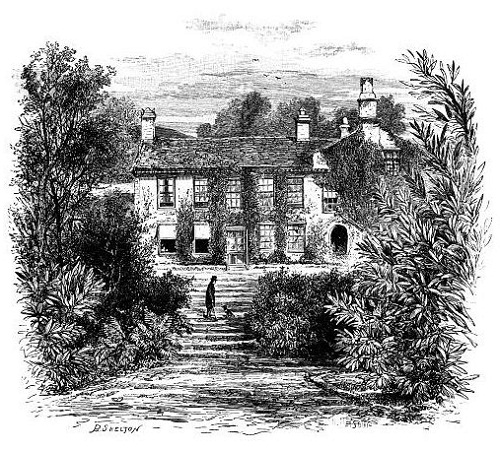Analyze the bond between Child and Nature by comparing `Tintern Abbey’ with the ‘Immortality Ode’.
Or
Analyze the bond between Child and Nature according to Wordsworth.
Answer: Wordsworth, like William Blake, was a poet of child-life. Both the poets marked not only the innocent and external appearance of a child but also his mystical and philosophical nature. Wordsworth himself was an extraordinary child endowed with sensibilities and feelings above the common run of children. Naturally he gave an idealized picture of child-life in the ‘Prelude’ and the famous ode on the ‘Intimations of Immortality’. The coarser pleasure of child life is referred to in the poem, ‘Tintern Abbey’ as in many other poems. In both the poems, ‘Ode: Intimations of Immortality’ and,’Tintern Abbey’, we find a deep relation between child and Nature.
 Wordsworth believes, it is in the period of childhood that we find a divine touch in every object of Nature. To show the deep relation of a child with Nature Wordsworth relates his own experience as a child in the first stanza of the “Ode: Intimations of Immortality”. He says, in his childhood the familiar scenes, the meadow, the grove, the stream, the earth and every common object of Nature seemed to be adorned with a ‘celestial light’. He found in the midst of Nature the glory and freshness of a dream. Thus Wordsworth has drawn the picture of a child-life in nature in its mystical and philosophical aspect.
Wordsworth believes, it is in the period of childhood that we find a divine touch in every object of Nature. To show the deep relation of a child with Nature Wordsworth relates his own experience as a child in the first stanza of the “Ode: Intimations of Immortality”. He says, in his childhood the familiar scenes, the meadow, the grove, the stream, the earth and every common object of Nature seemed to be adorned with a ‘celestial light’. He found in the midst of Nature the glory and freshness of a dream. Thus Wordsworth has drawn the picture of a child-life in nature in its mystical and philosophical aspect.
In his boyhood, Wordsworth had often mystical expedience when he was alone with Nature. It was an experience in which he was ‘laid asleep in body’ and became a ‘living soul’. In other words, he had moments of ‘visions’. As he grew older his visions occurred less and less often. Since these visions and their ‘recollections in tranquility’ were the main source of his poetic inspiration, their absence from him filled his mind with sadness and perplexity. So he asks in the ‘Ode of Immortality’,
“Whither is fled the visionary gleam?
Where is it now, the glory and the dream?”
In fact, by setting his own experience as a child, Wordsworth tends to show a spiritual relation between a child and Nature. He does not see the Child merely as a creature, ‘mewing and puking in the nurse’s arm’ but as a ‘Mighty Prophet’, ‘best Philosopher’, Seer blest’ who knows the truths of life. According to the poet, the child perceives a ‘Divine glory’ in Nature and realizes the soul’s immortality. That is why the child is spiritually greater than the adult man.
[adToAppearHere]
As for the carefree life of a boy, Wordsworth refers to his own example. As a boy Wordsworth moved about among the hills, jumped over the mountains ‘like a roe’, walked ‘by the sides of the deep rivers’, and the lonely streams’. He calls his boyish games ‘glad animal movements,’ or ‘coarser pleasures’. His love of Nature then was passionate and sensuous. About his youthful passion he says in Tintern Abbey,
“………. …. The sounding cataract
Haunted me like a passion; the tail rock,
The mountain, and the deep and gloomy wood.
their colors and their forms, were then to me
An Appetite, a feeling and a love”,
Every object of Nature raised in his mind a strong emotion, a feeling and a love, while he was a grown up boy.
Tile care-free life of the children is also depicted in the Immortality Ode. The poet refers to the shepherd-boy and lambs making merriment, the children gathering flowers in May-morning, and the baby leaping up on his mother’s arm. This life of the children is full of joy and happiness, because they have an intimate touch with Nature. So the poet asks the birds to sing, the young lambs to bind and the shepherd-boy to pipe, and expresses his desire to join them in their merriment.
We can conclude, saying that William Wordsworth has idealized the picture of a child life from his own experience as a child. He has shown an intimate relation of a child with Nature. According to him, the child who is brought up in the midst of Nature can become perfect in all respects, because Nature acts as his moral teacher and guide. Under the benign influence of Nature he can develop the spirit of love, sympathy, and fellow feeling. Besides, living in the lap of Nature he can feel the presence of his Creator, because the Spirit of God rolls through all objects of Nature.




